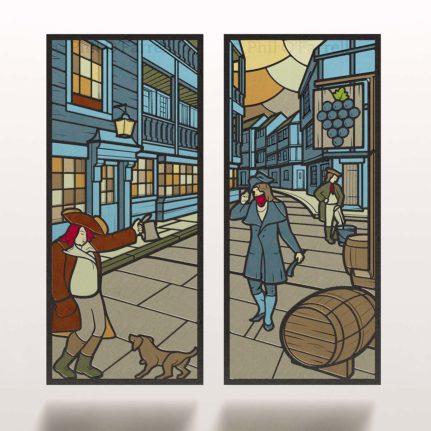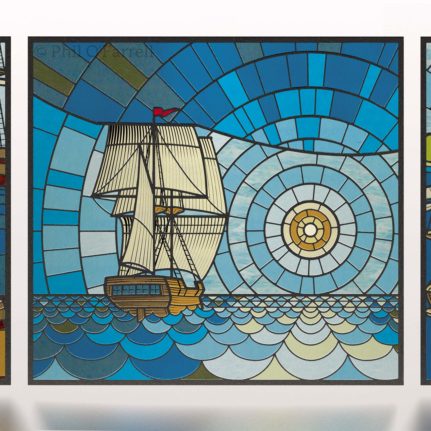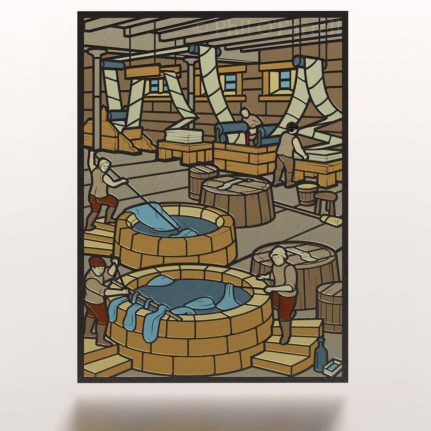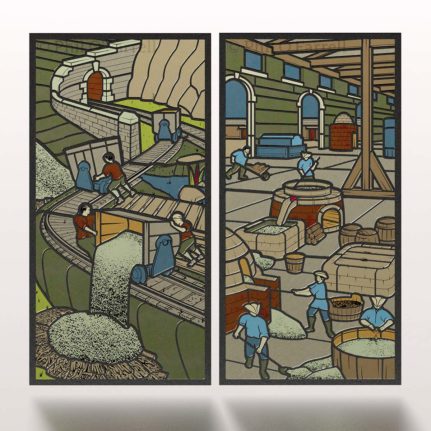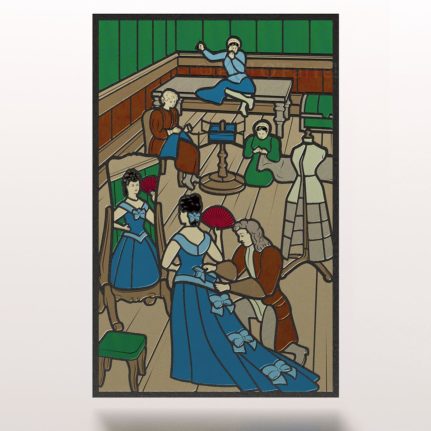The Company
The Dyers’ Company and dyeing
Early history
The earliest records of dyeing go back to 5,000 BC in Turkey and the earliest mention of dyeing in England was by the Venerable Bede in 731 AD but the earliest record of dyers as a guild in London is 1188 AD. The Guild of Dyers was granted rights of self regulation in 1311 but it was not until 1471 that King Henry VI granted the Dyers’ their first Royal Charter, changing the guild into an incorporated body and granting powers of search and fines for poor quality dyeing in London. Subsequent charters and byelaws were granted until the current one granted by Queen Anne in 1704.
Plants and animals were the exclusive source of natural dyes until William Henry Perkin, aged 18, accidentally discovered the first synthetic dye “Mauveine” while searching for a cure for malaria, and a new industry and era in dyeing was begun.
As part of the celebrations marking the 550th anniversary of the first Royal Charter, two artworks depicting the timeline of natural and synthetic dyes were commissioned from Neil Bottle and installed in the Binding Room.


The Dyers’ Company support for the Dyeing industry
As the centuries passed, the need for the Dyers’ Company to regulate the dyeing industry waned. The textile trade gradually moved further north and today there is almost no dyeing done in the London area. Instead, the industry is overseen by the Society of Dyers & Colourists (SDC) which was founded in Bradford in 1884 with the encouragement of the Dyers’ Company, and is now an international centre of excellence in resourcing technological and industrial knowledge. The SDC’s website is at https://sdc.org.uk/
In 1908 the Dyers’ Company instigated a research medal to be awarded annually to the best published research paper in the SDC’s Journal.
The Company is also particularly concerned to ensure a continued stream of able young people interested in learning the art (and science) of colour chemistry. The company therefore also awards bursaries, prizes and scholarships in a number of other, related areas. See further detail on this here.
The Dyers’ Company and dyeing
One of the ways in which the Company honours its history is be depicting the art of dyeing visually – and what better way than in the lavatories?! During the recent renovation of the Hall, it was suggested that the windows in the cloakroom lavatories should be stained glass, showing the historic use of urine in the process of dyeing.
In the eighteenth and nineteenth centuries, human urine was collected in London and shipped to Yorkshire where the textile trade, including dyeing, was flourishing. This idea was developed with a considerable amount of research and the windows were manufactured by Karl Theobald of Karl Percival Stained Glass, Hebden Bridge, Yorkshire and installed at Dyers’ Hall in February 2018.
A selection of these windows are shown below.
